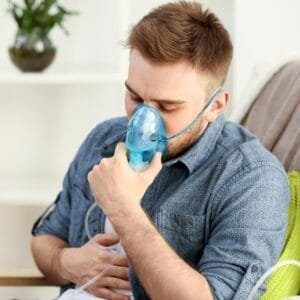Respiratory Diseases: Types, Causes, and Management
Respiratory diseases affect the lungs and airways, making it difficult to breathe properly. These conditions range from mild infections like colds to chronic diseases such as asthma, chronic obstructive pulmonary disease (COPD), and lung cancer. Respiratory diseases can significantly impact the quality of life, and some can even be life-threatening if left untreated. This guide explores the causes, symptoms, and treatments of respiratory diseases.



What Are Respiratory Diseases?
Respiratory diseases refer to conditions that affect the respiratory system, which includes the nose, throat, windpipe, lungs, and diaphragm. These diseases can be classified into:
- Chronic Respiratory Diseases: Long-term conditions like asthma, COPD, and interstitial lung disease.
- Infectious Diseases: Caused by viruses, bacteria, or fungi, such as pneumonia, tuberculosis, and influenza.
- Environmental and Occupational Diseases: Resulting from exposure to pollutants, chemicals, or allergens.
Common Types of Respiratory Diseases
1. Asthma
A chronic condition where the airways become inflamed, leading to difficulty breathing, wheezing, and coughing. Triggers include allergens, cold air, and stress.
2. Chronic Obstructive Pulmonary Disease (COPD)
A progressive disease characterized by difficulty breathing due to long-term exposure to irritants like cigarette smoke. It includes emphysema and chronic bronchitis.
3. Pneumonia
An infection of the lungs caused by bacteria, viruses, or fungi, leading to symptoms like fever, cough, and shortness of breath.
4. Tuberculosis (TB)
A bacterial infection that primarily affects the lungs, causing persistent cough, fever, and weight loss.
5. Lung Cancer
Uncontrolled cell growth in lung tissue, often associated with smoking, but also linked to environmental factors like air pollution.
Causes of Respiratory Diseases
Respiratory diseases can result from a variety of factors, including:
- Smoking: The leading cause of COPD and lung cancer.
- Environmental Pollutants: Airborne irritants like dust, pollen, and industrial chemicals can damage lung tissue.
- Infections: Viral or bacterial infections can lead to acute or chronic conditions.
- Genetics: Inherited conditions like cystic fibrosis can predispose individuals to respiratory diseases.
- Allergens: Exposure to mold, pet dander, or pollen can trigger asthma and allergic reactions.
Symptoms of Respiratory Diseases
Symptoms vary depending on the type and severity of the condition. Common signs include:
- Shortness of Breath: Especially during physical activity.
- Chronic Cough: Often with mucus or blood in severe cases.
- Wheezing: A high-pitched sound during breathing.
- Chest Pain: May occur with deep breaths or coughing.
- Fatigue: Due to reduced oxygen levels.
- Fever and Chills: Typically associated with infections like pneumonia or tuberculosis.
Complications of Respiratory Diseases
If left untreated, respiratory diseases can lead to:
- Respiratory Failure: The inability of the lungs to supply enough oxygen.
- Lung Infections: Conditions like bronchitis and pneumonia can worsen existing diseases.
- Heart Strain: Chronic lung diseases can put additional pressure on the heart.
- Reduced Quality of Life: Ongoing symptoms can limit daily activities and lead to psychological distress.
Diagnosis of Respiratory Diseases
Diagnosing respiratory diseases involves a combination of clinical evaluation and diagnostic tests:
- Pulmonary Function Tests (PFTs): Measure lung capacity and airflow.
- Chest X-rays or CT Scans: Identify structural abnormalities or infections.
- Blood Tests: Detect infections or monitor oxygen levels.
- Bronchoscopy: A procedure to examine the airways using a thin, flexible tube.
- Allergy Tests: Identify triggers for asthma or allergic respiratory diseases.
Treatment Options for Respiratory Diseases
Treatment varies depending on the disease but often includes a combination of medications, lifestyle changes, and supportive care.
Medications
- Bronchodilators: Relax airway muscles to improve breathing (e.g., albuterol).
- Anti-Inflammatory Drugs: Reduce inflammation in asthma and COPD.
- Antibiotics or Antivirals: Treat bacterial or viral infections like pneumonia.
- Targeted Therapy: Used in lung cancer to attack specific cancer cells.
Lifestyle Changes
- Quit Smoking: Reduces the risk of worsening symptoms and disease progression.
- Regular Exercise: Improves lung capacity and overall health.
- Healthy Diet: Supports immune function and energy levels.
Supportive Care
- Oxygen Therapy: For patients with severe breathing difficulties.
- Pulmonary Rehabilitation: A program to improve lung function and quality of life.
- Vaccinations: Protect against respiratory infections like influenza and pneumonia.
Preventing Respiratory Diseases
Preventive measures can significantly reduce the risk of respiratory diseases:
- Avoid Smoking: Both active and passive smoking harm the lungs.
- Wear Protective Equipment: Use masks in polluted or hazardous environments.
- Practice Good Hygiene: Wash hands regularly to prevent infections.
- Stay Vaccinated: Protect against diseases like flu, pneumonia, and COVID-19.
- Exercise Regularly: Boosts lung function and immunity.
FAQs about Respiratory Diseases
1. What are common respiratory diseases?
Common conditions include asthma, COPD, pneumonia, tuberculosis, and lung cancer.
2. What are the symptoms of respiratory diseases?
Symptoms include shortness of breath, chronic cough, chest pain, and wheezing.
3. How can I prevent respiratory diseases?
Avoid smoking, maintain good hygiene, wear protective masks, and stay vaccinated.
4. What is the treatment for chronic respiratory diseases?
Treatment includes bronchodilators, anti-inflammatory medications, oxygen therapy, and pulmonary rehabilitation.
5. When should I see a doctor for respiratory issues?
Consult a doctor if you experience persistent cough, breathlessness, or chest pain.
Conclusion
Respiratory diseases are a significant global health concern, affecting millions annually. Early detection, timely treatment, and lifestyle changes can help manage symptoms and improve quality of life. By understanding the causes and adopting preventive measures, individuals can protect their respiratory health and reduce the risk of complications.
